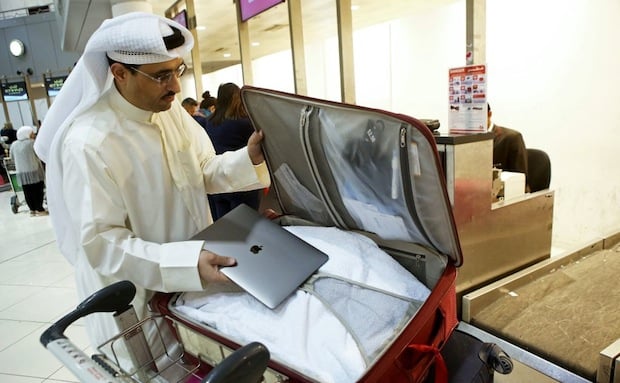Middle East airlines to see traffic rise as demand restores on US routes
The US had enacted its controversial laptop ban during this period last year

Middle East carriers are expected to see an increase in passenger traffic as demand improves on US routes this year, according to the latest report from the International Air Transport Association (IATA).
The report found that passenger demand for regional airlines rose 4.1 per cent in April. Capacity climbed 3.2 per cent and load factor rose 0.7 percentage point to 77.2 per cent.
“The seasonally-adjusted upward trend in traffic has strengthened since the start of the year, aided by healthy growth on the key routes to/from Asia and Europe, as well as continuing signs of recovery on the market segment to/from North America,” the report said.
“Annual comparisons are likely to become more favourable in coming months, owing to the disruptions caused by the proposed travel bans to the US and the since-lifted ban on large portable electronic devices in the year-ago period.”
In January last year, US President Donald Trump issued a travel ban targeting seven predominantly Muslim countries in January, which caused chaos at regional airports.
Later in March, the US also banned passengers from 10 airports in the Middle East and North Africa region from carrying large electronic devices onboard flights to the country. The restrictions were placed over concerns that explosives could be concealed in the devices.
The ban had a major impact on regional airlines, with UAE carrier Emirates even cutting flights on five US routes in April. The restrictions were eased in a few months, but airlines faced a big drop in passenger demand.
Also read: Emirates bookings to US dropped 35% overnight after Jan travel ban
US ends controversial laptop ban on Middle Eastern airlines
UAE says Trump travel ban is ‘not against Muslims’
Meanwhile the IATA also revealed that global passenger traffic data for April 2018 showed that demand rose by 6.2 per cent compared to April 2017.
Capacity also increased by 5.9 per cent, and load factor climbed 0.2 percentage point to 82.3 per cent.
“Demand for air transport continues to be above the long-term trend,” said Alexandre de Juniac, IATA’s director general and CEO.
“However, increases in airline cost inputs, most notably fuel prices, means that we are unlikely to see increased stimulation from lower fares in 2018, compared to previous years.”
